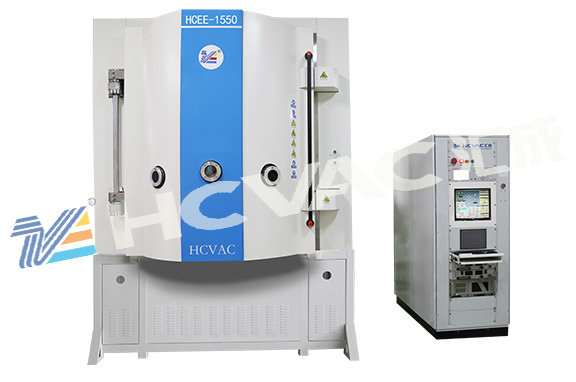Optical pvd coating machines can coat a variety of metal films, using the functional characteristics of light to meet our daily needs. They are often used in lenses, screens, cameras, mobile phone cases, etc. Below, the editor of Huicheng Vacuum will give you a detailed introduction to several optical films commonly plated by optical pvd coating machines:

1. Anti-reflection film
It is the most widely used optical film, which can reduce the reflectivity of optical surfaces and increase their transmittance. For a single wavelength, the theoretical reflectivity can be reduced to zero and the transmittance is 100%; for the visible spectrum, the reflectance can be reduced to 0.5% or even lower to ensure that a complex system composed of multiple lenses has enough Excellent transmittance and extremely low stray light. There is no modern optical device that does not undergo anti-reflection processing. Due to its extremely low reflectivity and bright surface color, glasses in modern people's daily lives are generally coated with anti-reflective coatings.
2. High reflective film
Can reflect most of the incident light energy back. When a dielectric film stack is selected, since the loss of the optical film is extremely low, as the number of film layers continues to increase, its reflectivity can continue to increase (approaching 100%). This highly reflective film is essential in both laser manufacturing and laser applications.
3. Energy splitting film
It can transmit part of the incident light energy and reflect the other part into two beams of light. The most commonly used light splitting film is T:R=50:50.
4. Spectral dichroic film
It can transmit the energy of part of the spectrum of the incident light and reflect the energy of the other part of the spectrum. What reflects long-wave energy and transmits short-wave energy is called a short-wave pass cut-off filter; what transmits long-wave energy and reflects short-wave energy is called a long-wave pass cut-off filter. They can be used to split a beam of light into multiple beams of different colors. For example, if a beam of light is divided into three primary colors: red, green, and blue, any color light can be obtained by combining these three colors. This kind of color spectroscopic film is indispensable in the optoelectronic color industry, such as color photography, color TV, color projection, color printing and other fields.
5. Broadband pass filter film
The most successful recent application is in the manufacture of low-emissivity glass (LOW-E glass), which can be used to develop a building window glass that reflects thermal energy while transmitting sunlight. As energy costs continue to rise, optical films will surely develop into a big industry.
The above are the several types of optical films that are most commonly coated by
optical pvd coating machines. There are many, many types of optical films, so I will not describe them one by one below.



